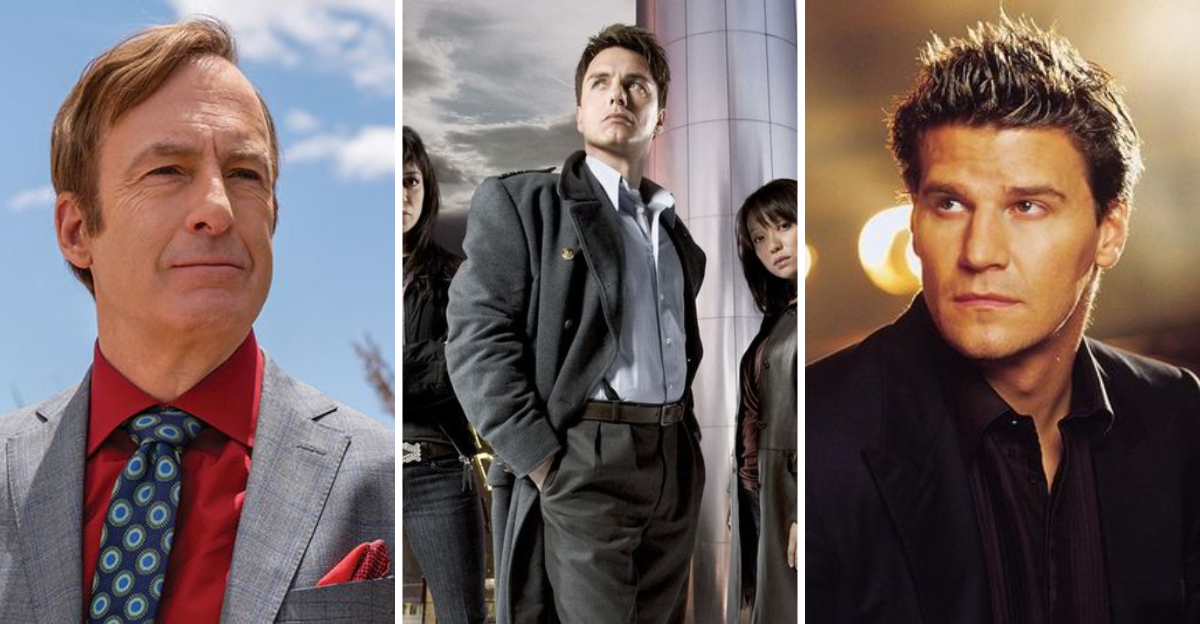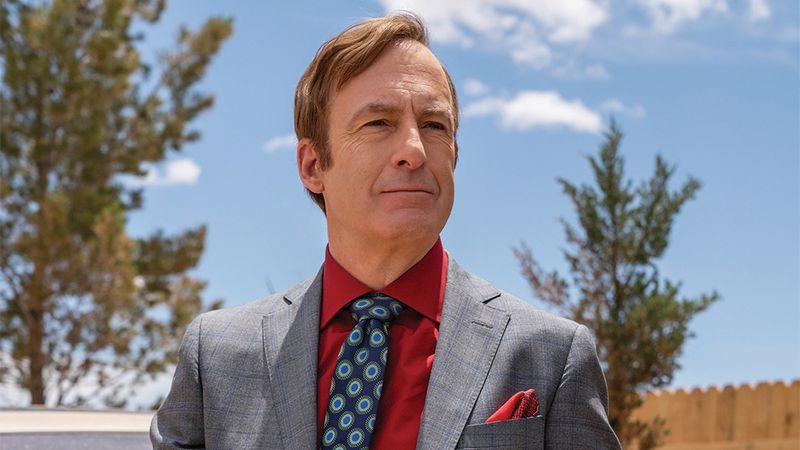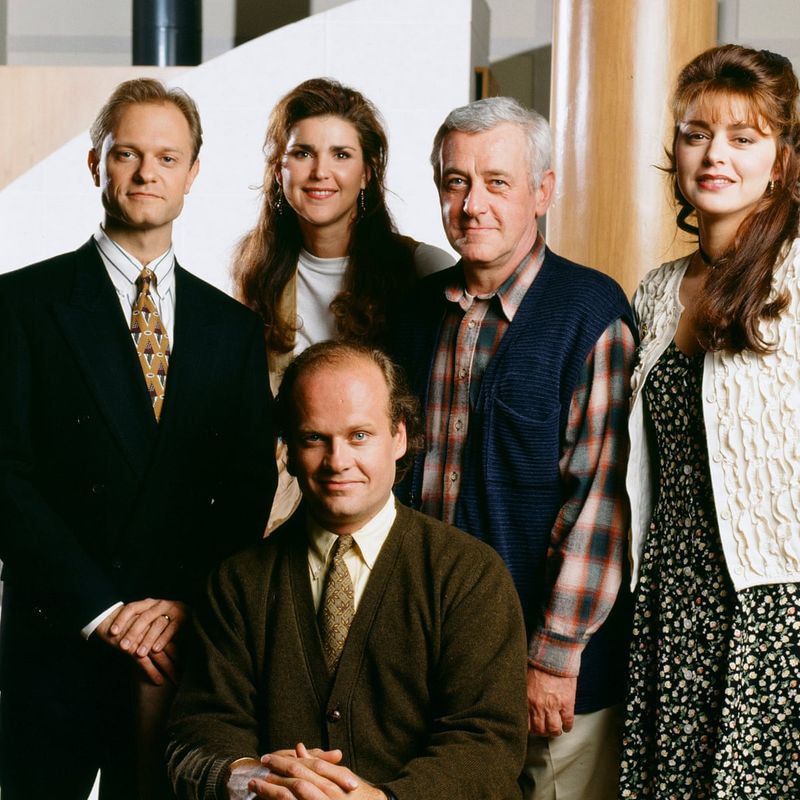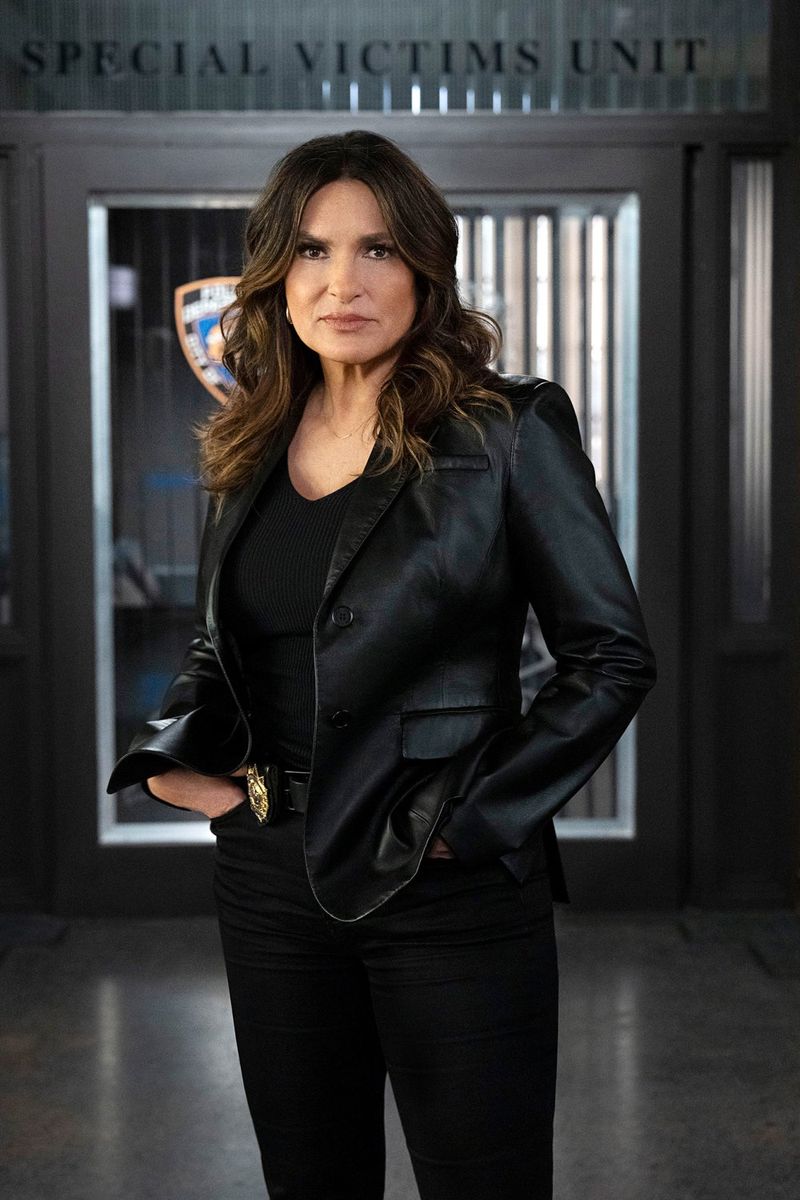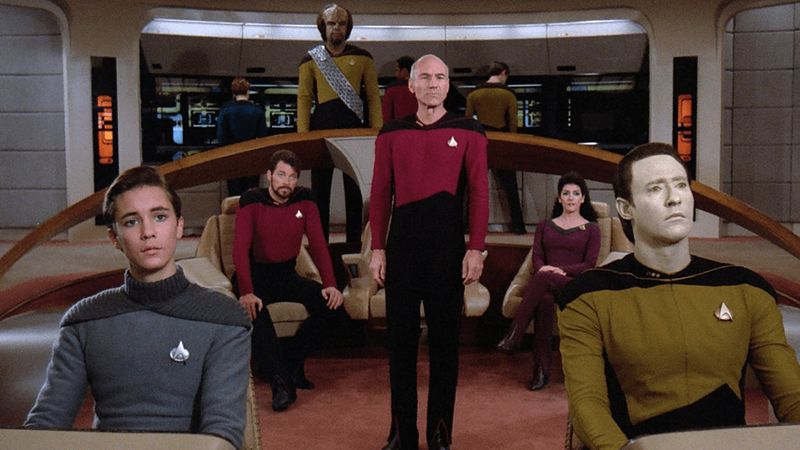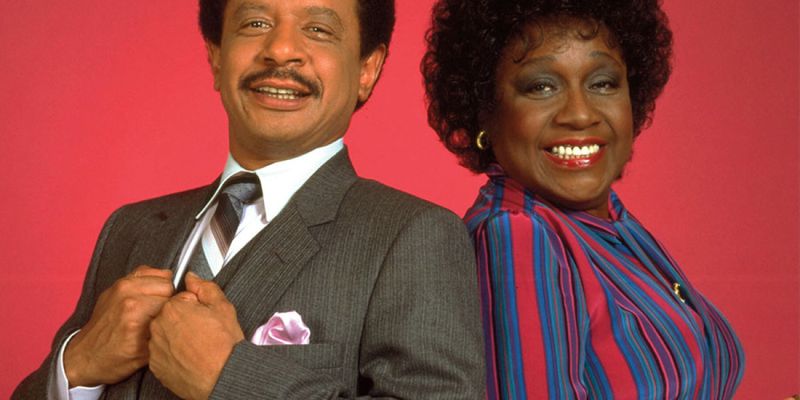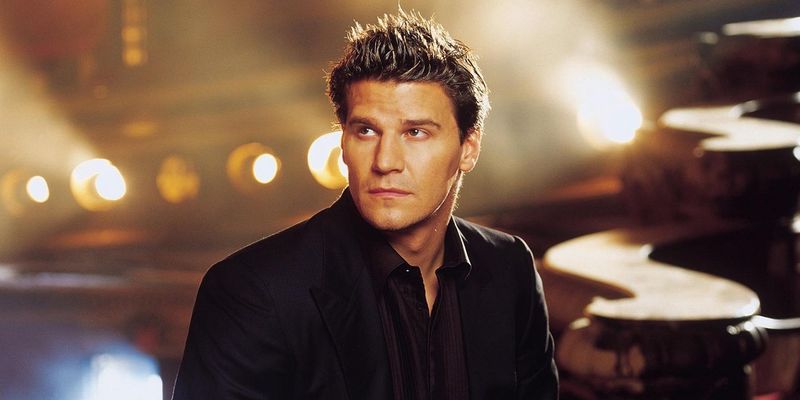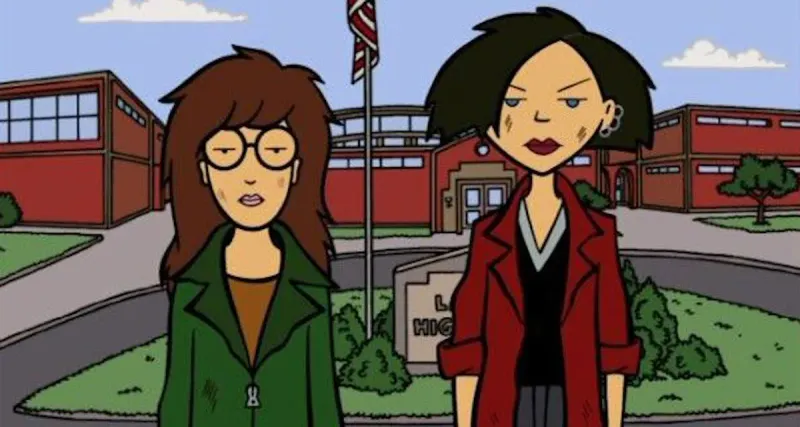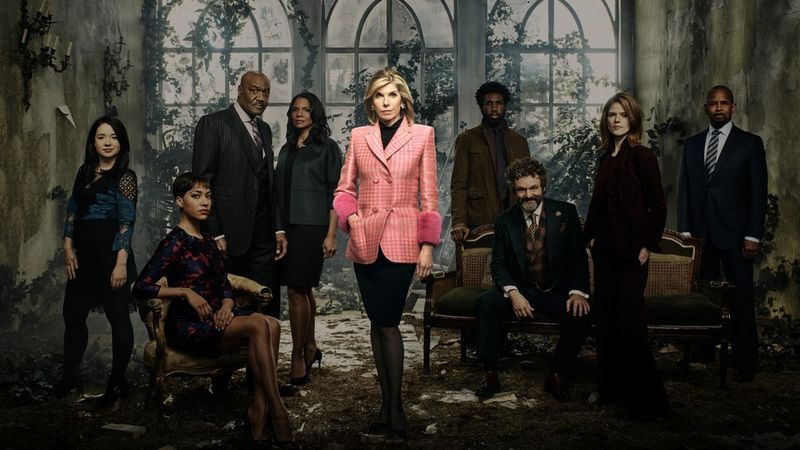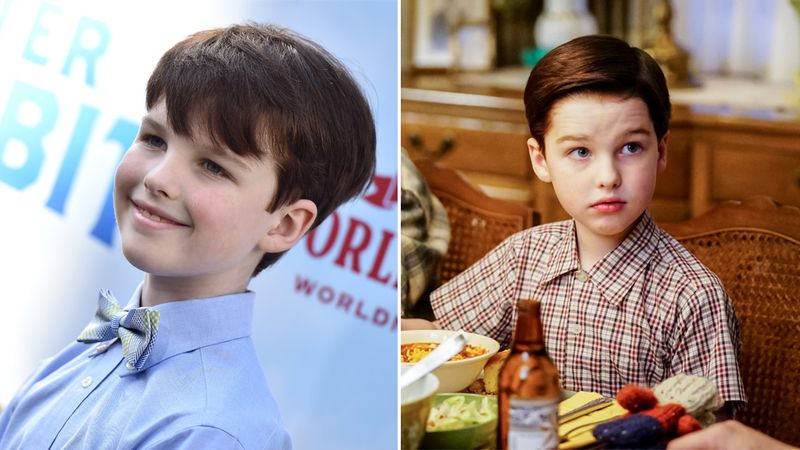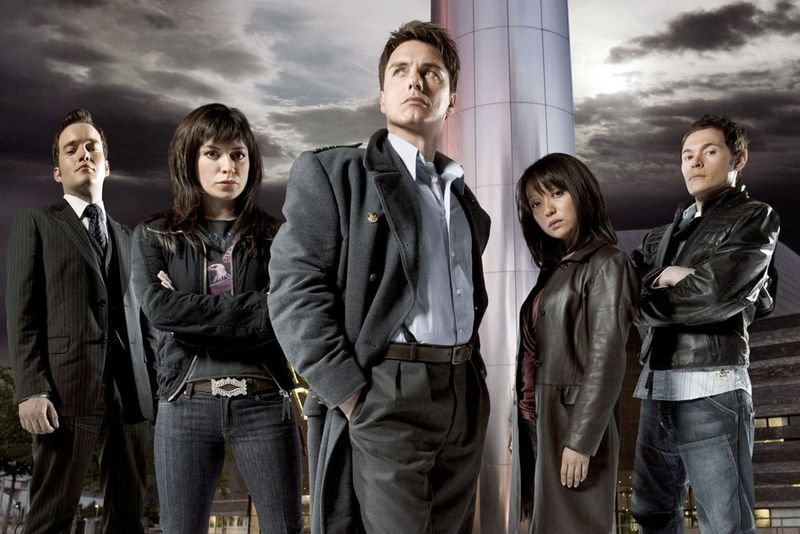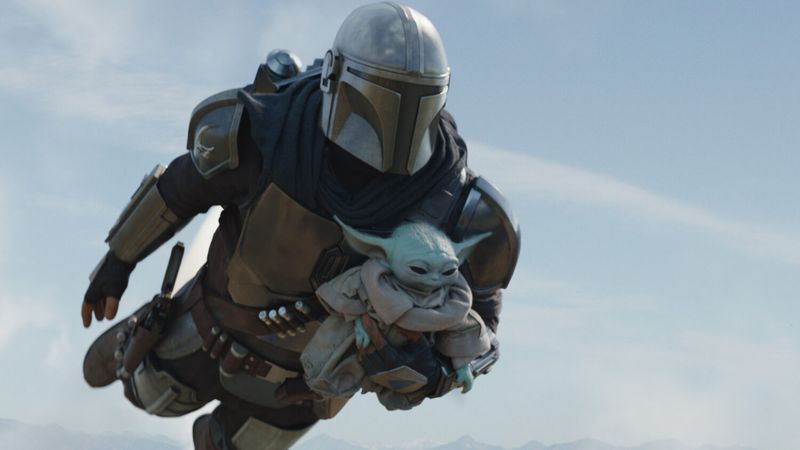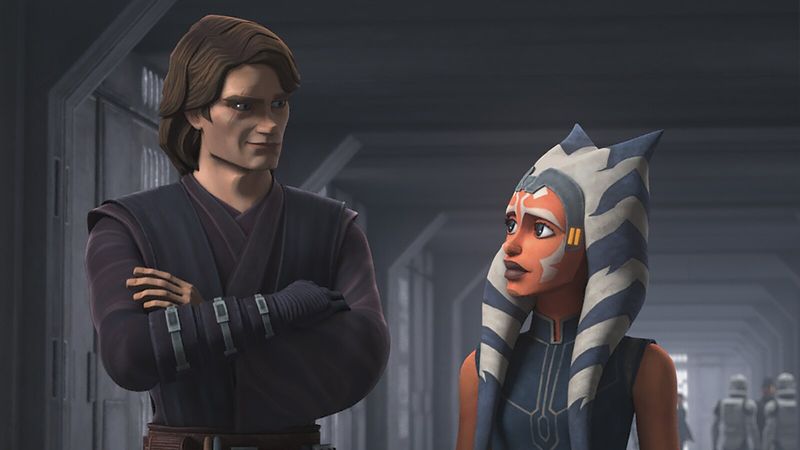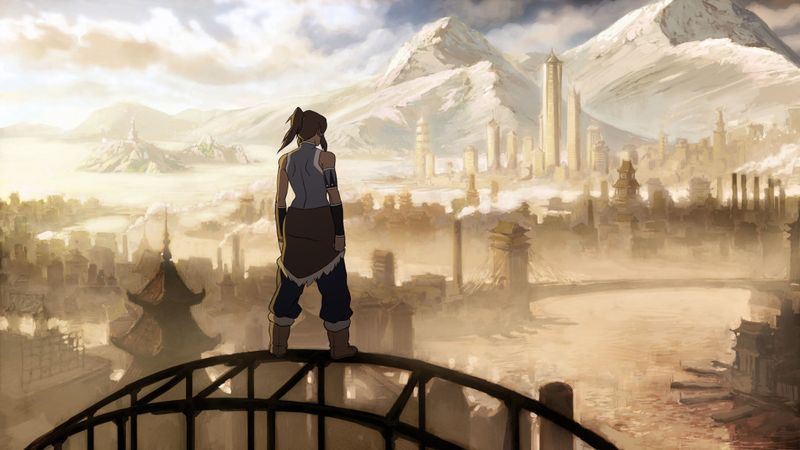TV spin-offs often live in the shadow of their parent shows, but sometimes they break free and shine even brighter. These offshoot series take characters or concepts from established shows and develop them into something fresh and exciting. From legal dramas to sci-fi adventures, the following 13 spin-offs didn’t just match their predecessors – they surpassed them in creativity, critical acclaim, and cultural impact.
1. Better Call Saul (2015-2022)
Jimmy McGill’s transformation into the morally flexible lawyer Saul Goodman offers a masterclass in character development. The prequel explores themes of identity and compromise with a deliberate pace that allows viewers to truly understand each decision.
Unlike Breaking Bad’s explosive plot twists, Better Call Saul finds drama in quieter moments and complex relationships. Bob Odenkirk’s nuanced performance reveals layers barely hinted at in the original series.
The show’s visual storytelling, with its distinctive camera angles and symbolic imagery, creates a more sophisticated viewing experience that rewards careful attention.
2. Frasier (1993-2004)
When psychiatrist Frasier Crane moved from Boston to Seattle, television comedy reached new heights of sophistication. Trading bar stools for radio waves, the show crafted a perfect ensemble around Kelsey Grammer’s pompous but lovable lead.
The dynamic between Frasier, his blue-collar father Martin, and equally pretentious brother Niles created comedy gold. Their contrasting personalities and values generated both hilarious misunderstandings and touching moments of growth.
Frasier’s witty wordplay and cultural references elevated sitcom writing while remaining accessible. The show’s 37 Emmy Awards speak volumes about its quality compared to its predecessor.
3. Law & Order: Special Victims Unit (1999-present)
Mariska Hargitay’s Detective Olivia Benson brought unprecedented emotional depth to the police procedural format. Unlike the original series’ revolving door of detectives, SVU built its foundation on consistent character development across decades.
The show tackles sensitive crimes with remarkable nuance and compassion for survivors. These complex cases often explore social issues and moral questions that the original series rarely addressed.
SVU’s cultural impact extends beyond entertainment, raising awareness about sexual violence and influencing real-world conversations. No wonder it’s outlasted its parent show by years, becoming the longest-running primetime live-action series in television history.
4. Star Trek: The Next Generation (1987-1994)
Captain Picard’s Enterprise boldly went where Captain Kirk never could. With significantly improved production values and special effects, TNG created a more visually compelling universe for its philosophical explorations.
Patrick Stewart brought Shakespearean gravitas to the captain’s chair, leading a diverse crew that tackled complex ethical dilemmas. The show’s writers embraced nuanced storytelling that examined human nature through alien encounters and futuristic scenarios.
TNG’s cultural footprint expanded beyond science fiction fans to mainstream audiences. Episodes like “The Inner Light” and “The Measure of a Man” are considered some of television’s finest hours, regardless of genre.
5. The Jeffersons (1975-1985)
George and Louise Jefferson moved on up from Queens to Manhattan’s East Side, bringing with them groundbreaking representation of successful Black Americans. Their luxury apartment and thriving business directly challenged television’s previous limited portrayals.
Sherman Hemsley’s portrayal of the proud, opinionated George created an iconic character whose complexity went beyond the sidekick role he played on All in the Family. The show fearlessly addressed racism, classism, and interracial relationships with both humor and honesty.
The Jeffersons outlasted its parent show by years, proving audiences embraced its progressive vision. Its theme song remains instantly recognizable nearly five decades later.
6. Angel (1999-2004)
Brooding vampire Angel escaped Sunnydale’s teenage angst for Los Angeles’ urban darkness. The spin-off immediately distinguished itself with noir-inspired aesthetics and a mission-driven detective agency format that allowed for both standalone cases and season-long arcs.
David Boreanaz’s character evolved from Buffy’s mysterious love interest into a complex hero wrestling with redemption. The supporting cast, especially Amy Acker’s Fred and Alexis Denisof’s Wesley, underwent transformations more dramatic than anything seen in Buffy.
Angel’s fifth season remains a masterclass in television storytelling, culminating in one of the most perfect series finales ever filmed. The show’s unflinching exploration of moral compromise still resonates with viewers today.
7. Daria (1997-2002)
Sarcastic teenager Daria Morgendorffer graduated from background character to cultural icon by capturing 90s teenage alienation perfectly. Her deadpan observations of high school absurdity resonated with anyone who ever felt like an outsider.
Unlike the crude humor of Beavis and Butt-Head, Daria delivered smart social commentary wrapped in accessible animation. The show explored friendship, family dynamics, and identity formation with surprising emotional depth beneath its cynical surface.
Female viewers particularly connected with Daria’s refusal to compromise her intelligence or values for popularity. Her combat boots and monotone voice became symbols of resistance against shallow conformity, influencing fashion and attitude for generations.
8. The Good Fight (2017-2022)
Christine Baranski’s Diane Lockhart found herself starting over at a historically Black law firm, creating an explosive environment for examining race, politics, and justice. The timing couldn’t have been better—premiering days after Trump’s inauguration, the show fearlessly tackled America’s deepening divisions.
Freed from network television constraints, The Good Fight embraced surreal elements like animated musical sequences and fourth-wall breaks. These creative risks paid off brilliantly, allowing the series to comment on contemporary chaos in ways The Good Wife never could.
The ensemble cast, including Delroy Lindo and Audra McDonald, brought gravitas to even the most outlandish storylines. Every season felt urgently relevant to real-world headlines.
9. Young Sheldon (2017-2024)
Nine-year-old Sheldon Cooper navigates 1980s East Texas with a genius intellect but limited social understanding. Unlike The Big Bang Theory’s laugh-track-driven humor, this prequel embraces warmth and nostalgia through single-camera storytelling.
Iain Armitage performs the impossible task of making viewers care deeply about a character known for adult insufferability. The supporting family members, particularly Zoe Perry’s Mary and Annie Potts’ Meemaw, bring dimension to relationships only hinted at in the original series.
Young Sheldon succeeds by finding genuine emotion in small moments rather than relying on geek culture references. The narration by Jim Parsons connects the shows while emphasizing how far the character—and the franchise—has evolved.
10. Torchwood (2006-2011)
Captain Jack Harkness led a secret team defending Earth from alien threats with adult themes Doctor Who couldn’t touch. The watershed-hour programming allowed Torchwood to explore sexuality, mortality, and ethical dilemmas with unflinching maturity.
John Barrowman’s charismatic immortal anchored a show that boldly featured LGBTQ+ characters when representation was still rare in science fiction. The miniseries format of later seasons, particularly “Children of Earth,” delivered some of British television’s most devastating storytelling.
Torchwood carved its own identity through a distinctly Welsh setting and willingness to permanently kill beloved characters. Its darker vision of the Whoniverse proved the franchise could successfully target different audience segments.
11. The Mandalorian (2019-present)
A lone bounty hunter and his adorable green companion redefined what Star Wars storytelling could be. After divisive sequel films, The Mandalorian returned to the franchise’s roots with space western vibes and practical effects that captured the original trilogy’s spirit.
Pedro Pascal’s performance achieves the remarkable feat of creating an emotionally compelling character despite rarely showing his face. The father-child relationship at the show’s core provides heart without sacrificing the gritty action sequences fans crave.
The Mandalorian revitalized Star Wars by expanding its universe through small, personal stories rather than galaxy-spanning conflicts. Its success spawned multiple spin-offs of its own, creating a new golden age for the franchise on television.
12. Star Wars: The Clone Wars (2008-2020)
The animated series transformed wooden prequel characters into complex, beloved figures through extended storytelling. Anakin Skywalker’s gradual fall to the dark side became genuinely tragic when viewed through his relationships with Ahsoka Tano and Obi-Wan Kenobi.
Creator Dave Filoni expanded George Lucas’s universe with rich lore about Force mythology and clone trooper individuality. The animation style evolved from somewhat stiff early seasons into cinematic visual storytelling that rivaled blockbuster films.
The Clone Wars rehabilitated the prequel era’s reputation by filling narrative gaps with emotional resonance. Characters like Ahsoka and Captain Rex have become so essential to Star Wars that they’ve crossed over into live-action, demonstrating the show’s lasting impact.
13. The Legend of Korra (2012-2014)
Avatar Korra faced challenges her predecessor Aang never imagined in a rapidly modernizing world. The sequel series boldly jumped forward 70 years, replacing the original’s medieval Asian setting with a 1920s-inspired industrial society grappling with technological change.
Korra herself represented a dramatic departure from Aang—headstrong, physically powerful, and struggling with the spiritual aspects of being the Avatar. The show tackled mature themes including PTSD, fascism, and revolution with remarkable nuance for an animated series.
The groundbreaking finale featured television’s first explicitly bisexual lead character in children’s programming. This representation, along with stunning animation sequences, cemented the show’s legacy as more than just a continuation.
